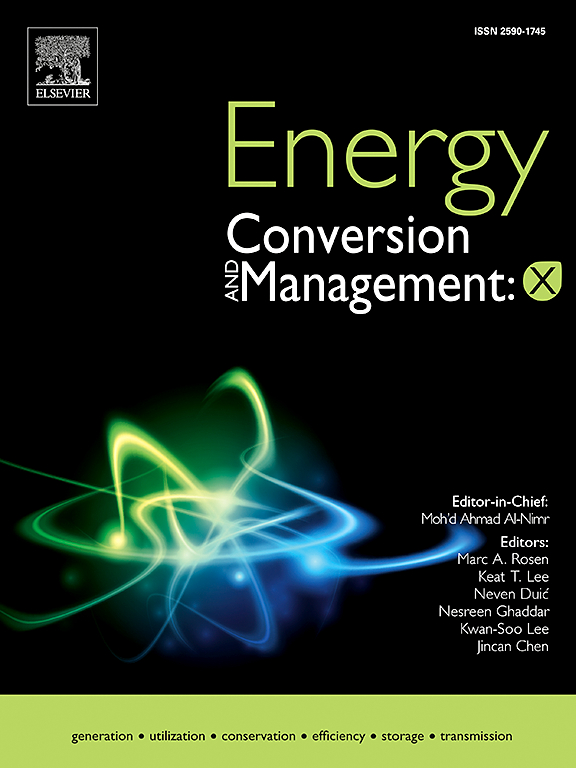Spatiotemporal forecasting using multi-graph neural network assisted dual domain transformer for wind power
IF 9.9
1区 工程技术
Q1 ENERGY & FUELS
引用次数: 0
Abstract
Accurate prediction of wind power generation is crucial for operational and maintenance decision in wind farms. With the increasing scale and capacity of turbines, incorporating both temporal and spatial characteristics has become essential to improve prediction accuracy. In this paper, a novel spatiotemporal multi-step wind power forecasting method using multi-graph neural network assisted dual domain Transformer is proposed. Specifically, to adequately represent the heterogeneous dependencies among wind turbines, multi-relational graphs are constructed and integrated into a unified graph via attention mechanisms. Subsequently, the spatiotemporal fusion module (STFM) is developed using graph convolutional network and one-dimensional convolutional neural network to capture temporal and spatial features simultaneously. Moreover, the time–frequency dual domain Transformer (DDformer) is devised to fully utilize the information extracted by the STFM. Sequence learning in DDformer is performed through three perspectives, including multi-head self-attention mechanism, intrinsic mode function attention mechanism, and residual connection. Finally, the comprehensive evaluation metrics are formulated to assess the overall performance of wind power forecasting at both individual turbine and entire farm levels. Extensive simulations on a real-world dataset are conducted for multi-step forecasting, covering time horizons ranging from 10 min to 6 h ahead. In the case study, the proposed method consistently outperformed advanced benchmarks and ablation models, achieving average comprehensive normalized mean absolute error and normalized root mean square error of 5.8469% and 8.9461%, respectively, with improvements of 38.35% and 33.72%. Overall, the effectiveness of multi-step forecasting makes this study provide valuable insights into a new framework for wind power forecasting.
求助全文
约1分钟内获得全文
求助全文
来源期刊

Energy Conversion and Management
工程技术-力学
CiteScore
19.00
自引率
11.50%
发文量
1304
审稿时长
17 days
期刊介绍:
The journal Energy Conversion and Management provides a forum for publishing original contributions and comprehensive technical review articles of interdisciplinary and original research on all important energy topics.
The topics considered include energy generation, utilization, conversion, storage, transmission, conservation, management and sustainability. These topics typically involve various types of energy such as mechanical, thermal, nuclear, chemical, electromagnetic, magnetic and electric. These energy types cover all known energy resources, including renewable resources (e.g., solar, bio, hydro, wind, geothermal and ocean energy), fossil fuels and nuclear resources.
 求助内容:
求助内容: 应助结果提醒方式:
应助结果提醒方式:


